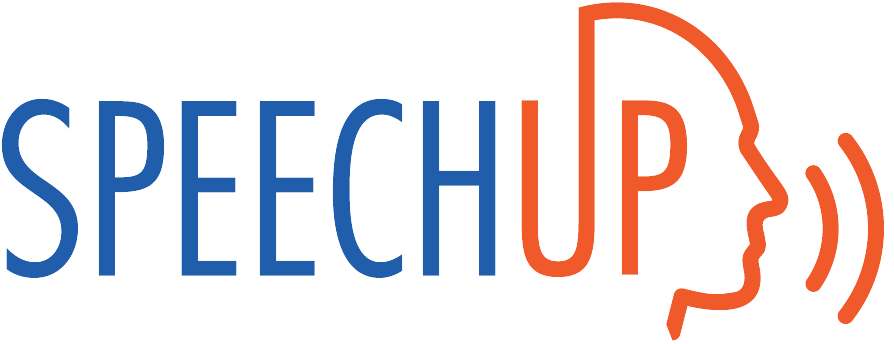ONLINE SPEECH THERAPY
Dysarthria Treatment Speech Therapy
Convenient & Effective Speech Therapy


DYSARTHRIA
What is dysarthria?
Dysarthria is a speech disorder that usually results from an injury or illness affecting the brain, such as a stroke, traumatic brain injury, or brain tumor. This condition affects the brain areas and nerves responsible for controlling the tongue, lips, vocal cords, and diaphragm, which are crucial for clear speech.
People with dysarthria often experience muscle weakness and difficulty with precise movements needed for speaking. Early assessment and intervention by a speech-language pathologist can significantly improve outcomes, especially if treatment begins soon after the injury or illness. The extent of recovery can depend on the severity of the brain damage.
In addition to physical challenges, dysarthria can also lead to emotional distress, including frustration, sadness, anxiety, or depression. This emotional impact often stems from difficulties in communicating effectively with others.
TYPES OF DYSARTHRIA
What are the types of dysarthria?
Dysarthria can vary depending on where and how severely the brain has been damaged. The type of dysarthria a person experiences depends on the location and extent of the brain damage. Sometimes, severe damage can result in more than one type of dysarthria if multiple areas of the brain are affected. Here are the main types:
Flaccid Dysarthria: This type features a breathy or nasal voice and is usually due to damage to the lower motor neurons.
Spastic Dysarthria: It’s characterized by a strained voice and slow speech. This occurs when there is damage to the upper motor neurons, either on both sides or one side of the brain.
Ataxic Dysarthria: Known for its irregular stress patterns in speech, it results from damage to the cerebellum.
Hypokinetic Dysarthria: This type involves rapid speech and is linked to damage in the extrapyramidal system.
Hyperkinetic Dysarthria: It can cause interruptions or inappropriate pauses in speech and is also related to extrapyramidal damage.
Mixed Spastic-Flaccid Dysarthria: This combination leads to hypernasality and a harsh vocal quality due to damage to both upper and lower motor neurons.
Each type affects speech in different ways, depending on which parts of the brain are involved.
DYSARTHRIA CAUSES
What causes dysarthria?
Dysarthria can be caused by a range of factors or sometimes a single major issue. Here are some common causes:
- Traumatic Brain Injury (TBI): Accidents like car crashes, falls, or other injuries that damage the brain can lead to dysarthria.
- Stroke: Also known as a cerebrovascular accident (CVA), this occurs when blood flow to the brain is interrupted, affecting speech.
- Illnesses: Certain brain-related illnesses, such as brain tumors, Parkinson’s disease, or multiple sclerosis, can result in dysarthria.
The impact of dysarthria can differ based on its cause and the severity of the damage. Sometimes, it may improve with treatment, while in other cases, it may be a long-term condition needing ongoing care.
DYSARTHRIA DIAGNOSIS
How is dysarthria diagnosed?
Dysarthria is typically diagnosed while someone is still recovering from the event or illness that caused it. A speech-language evaluation might be recommended, either during their hospital stay or through outpatient services, depending on their recovery stage.
Here’s what usually happens during the diagnosis:
Case History & Background: The speech-language pathologist (SLP) reviews the patient’s medical history and gathers information from the individual or their family about their speech before the event. This helps the SLP understand the patient’s condition and progress.
Physical Examination: The SLP checks the patient’s mouth, tongue, and throat for any physical issues or signs of weakness.
Speech Assessment: The SLP listens to how the patient speaks to evaluate their speech clarity, voice quality, and articulation.
Based on these evaluations, the SLP will create a personalized treatment plan tailored to the patient’s specific needs and goals.
DYSARTHRIA TREATMENT AND THERAPY
How speech language pathologists treat patients with dysarthria?
Dysarthria treatment varies for each person, depending on the type of dysarthria, the location and severity of brain damage, and individual needs. A speech-language pathologist will tailor the therapy to suit the patient’s specific situation and goals, considering their preferences and those of their caregivers.
Here are some common approaches:
Motor Exercises: Since dysarthria often involves muscle weakness, exercises are used to strengthen these muscles and improve coordination for speech.
Alternative Communication Methods: If necessary, individuals may use alternative communication methods, either temporarily or long-term. Options can include AAC devices like an iPad, communication boards, or simply a notebook.
Speech Drills: These drills help with the relearning and strengthening of the muscles involved in speech, similar to motor exercises.
Additionally, a speech-language pathologist can provide emotional support and refer patients to counseling professionals if needed.

